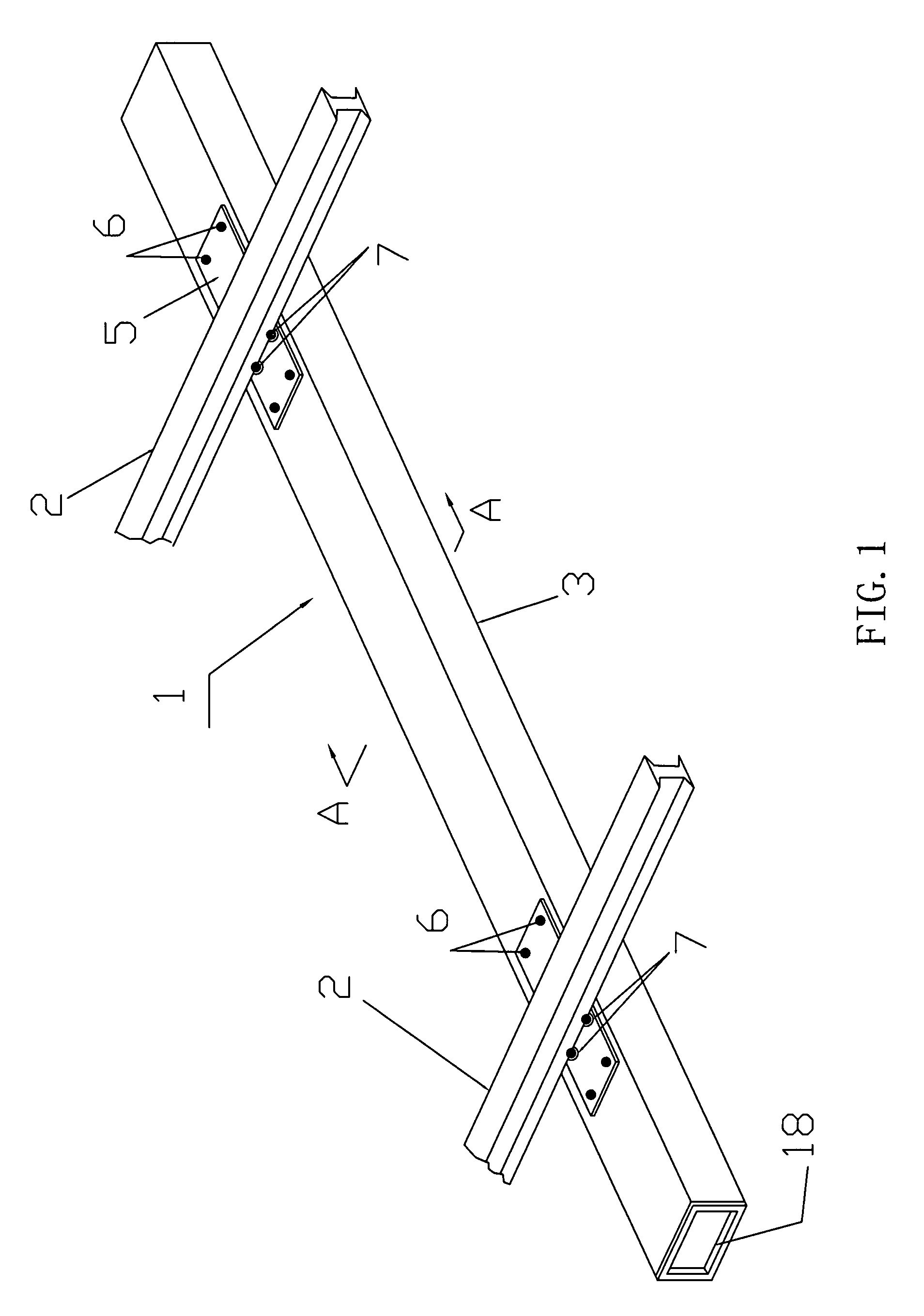Wholly wrapped railroad crosstie and its manufacturing method
a crosstie and manufacturing method technology, applied in the field of railroad crosstie, can solve the problems of shortening the service life of the crosstie, deteriorating and aging, and being susceptible to damage, and achieve the effect of shortening the service li
- Summary
- Abstract
- Description
- Claims
- Application Information
AI Technical Summary
Benefits of technology
Problems solved by technology
Method used
Image
Examples
Embodiment Construction
[0048]As showed in FIG. 1, reference numeral 1 represents the railroad crosstie made according to the principle of the present invention. It supports substantially parallel rails by means that is generally known to a skilled artisan. The crosstie 1 includes the outer casing 3 that is formed in a way to completely cover the inner core 4. During the manufacturing process, the outer casing material 3 melts and covers on the inner core 4 as a single integrated object. Therefore, there is not any space between the outer casing 3 and the inner core 4. In this very example, the thickness of the outer casing is 25.4 mm but it can also be changed according to different requirements.
[0049]The supporting areas for the rails 2 are set up on the crosstie plate 5 of the outer casing 3. The crosstie plates 5 are firmly secured to the crosstie 1 by fasteners 6. The conventional spikes 7 are driven through the apertures of the crosstie plates 5 into the crosstie 1 securing the rails 2 to the crossti...
PUM
| Property | Measurement | Unit |
|---|---|---|
| thickness | aaaaa | aaaaa |
| shape | aaaaa | aaaaa |
| volume | aaaaa | aaaaa |
Abstract
Description
Claims
Application Information
 Login to View More
Login to View More - R&D
- Intellectual Property
- Life Sciences
- Materials
- Tech Scout
- Unparalleled Data Quality
- Higher Quality Content
- 60% Fewer Hallucinations
Browse by: Latest US Patents, China's latest patents, Technical Efficacy Thesaurus, Application Domain, Technology Topic, Popular Technical Reports.
© 2025 PatSnap. All rights reserved.Legal|Privacy policy|Modern Slavery Act Transparency Statement|Sitemap|About US| Contact US: help@patsnap.com



